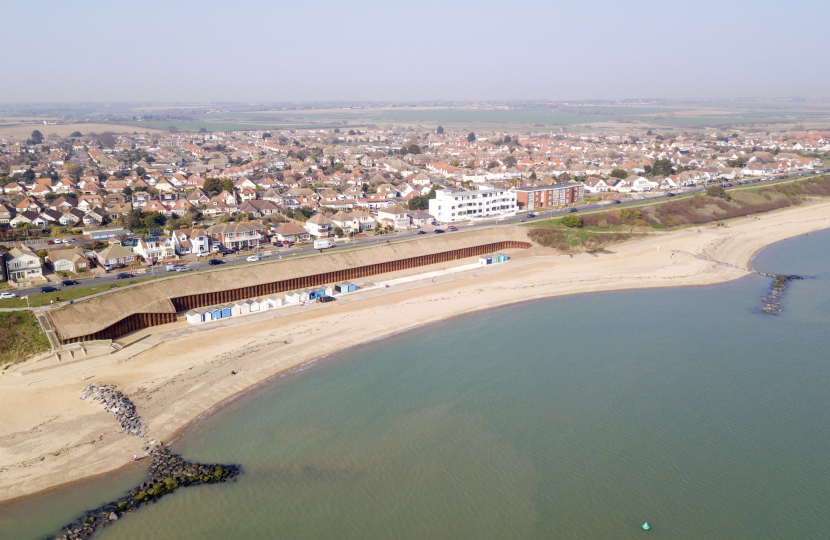Two sections of promenade along the Clacton and Holland-on-Sea seafront have opened after a multi-million pound engineering scheme to stabilise the cliffs was completed.
Tendring District Council (TDC) funded the £2.25million project to shore up around 160 metres of cliffs in two sections close to York Road and Russell Road.
Works were needed to restore the cliffs, which had slipped, in order to protect the roads above – Marine Parade East and Kings Parade – as well as the lower promenade and beach huts below.
Alex Porter, TDC Cabinet Member for Leisure and Tourism, said the works would safeguard the road, houses and businesses for decades to come.
“Our seafronts are one of our most valuable assets and it is important that we protect them for generations to come,” Cllr Porter said.
“We have stepped in to do this work to protect homes and infrastructure above the cliffs, and the promenade and beach huts below, with great success.
“We will continue to seek funding from other organisations with responsibility for this infrastructure to pay for this scheme and others which may be needed elsewhere along our seafront in the future.”
In total 128 metres of sheet piling was installed at York Road, and 35 metres at Russell road, to shore up the cliffs, with new drainage fitted to ensure any groundwater flows away; with water flowing through the clay cliffs under the top of sand the cause of the slips. A silent pile installation system was used to prevent both disturbance to nearby residents and any further damage to the cliffs.
Previous stabilisation schemes have re-graded the cliff slopes, but this was not possible in the latest project due to the narrowness of the cliffs.
Repairs have been made to the promenade as part of the works, while replacement bases for beach huts along that section were also installed. To allow the work to take place 38 beach huts were temporarily removed during the scheme.
Around 80 lorry-loads of knotweed found in the cliffs has been carefully disposed of, and the area re-seeded.
Works began in June 2021, and were completed in time for the Easter holidays. The scheme has an engineering design life of 65 years, but is expected to last at least a century.



